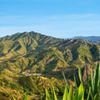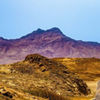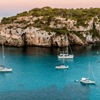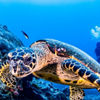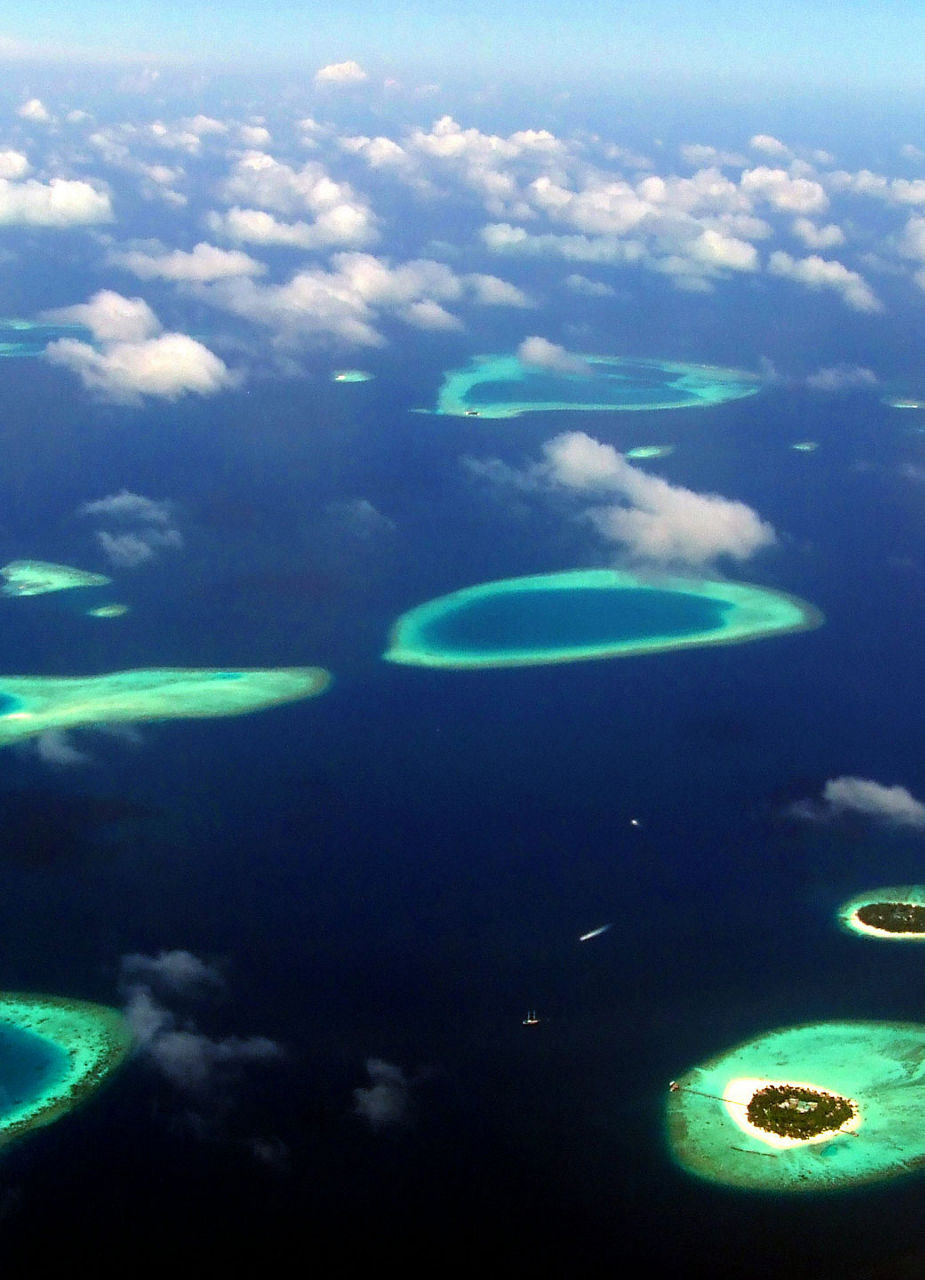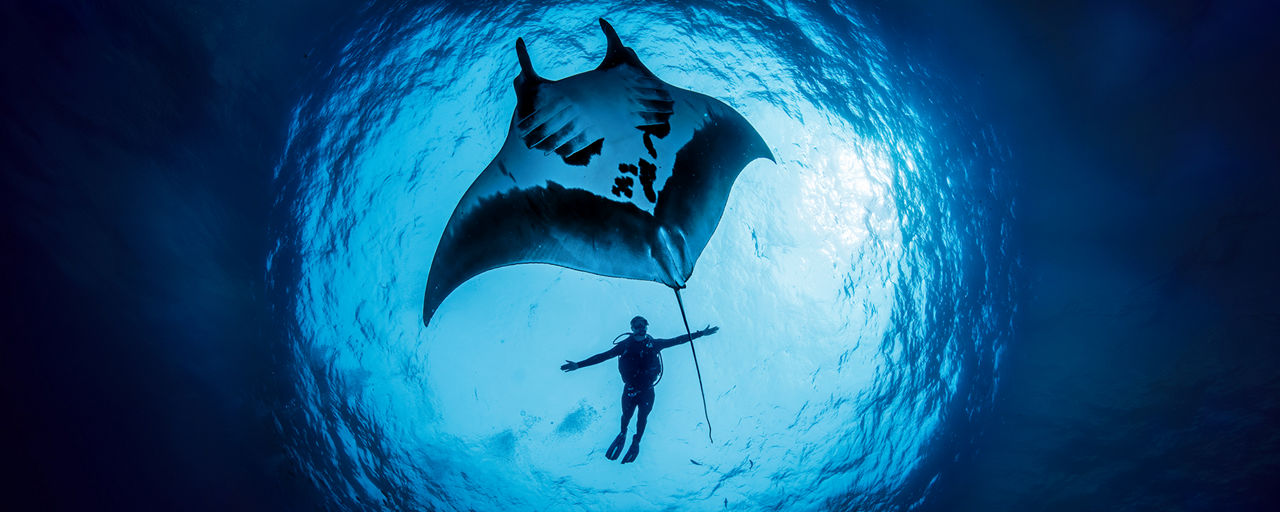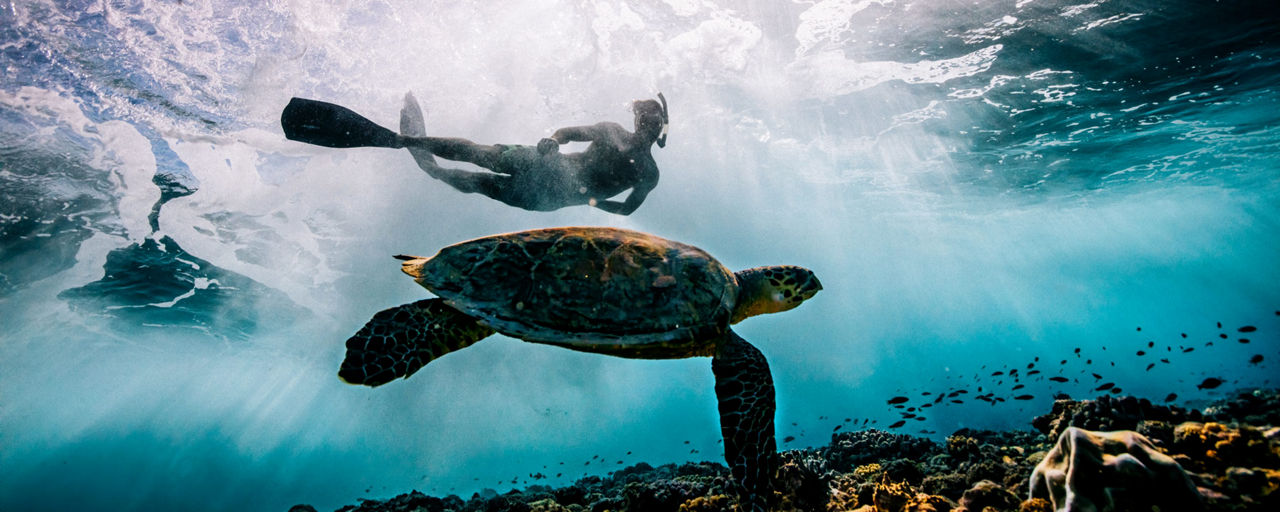Diving facts

- Dive shops on the islands
More than 20
- Best time to travel
September to May, July to October (mantas)
- Recommended diving suit
Shorty Wetsuit, 3 mm
- Flight connection
Edelweiss recommendation
The real treasure of the Maldives is arguably under water. The archipelago’s more than 1,000 islands are surrounded by an abundance of reefs and waters that are home to spectacular marine life. The best way to enjoy the stunning diversity of this island paradise is on a liveaboard scuba diving cruise. Liveaboard cruises combine comfortable accommodation with the opportunity to explore different atolls and experience the best dive sites for the respective season. Dives tend to be demanding, so advance completion of diver training is recommended.
Top diving spots in the Maldives
Manta paradise in the UNESCO World Biosphere Reserve: Baa Atoll
Baa Atoll is the first and, so far, only Maldivian atoll to be declared a UNESCO World Biosphere Reserve. Its untouched underwater world attracts a wealth of marine life, especially manta rays. Chiefly during the wet summer season, the famous Hanifaru Bay becomes a popular feeding spot for these gentle giants. In an effort to protect the animals, scuba diving has been banned in the bay since 2012, but snorkelling and freediving are still permitted. Given the atoll’s size, scuba divers are likely to encounter manta rays, as well as whale sharks, hammerhead sharks and large schools of barracuda and batfish in many other spots.

Rubbing shoulders with big fish on the south side of the Ari Atoll
Divers eager to see large fish, such as hammerhead sharks, whale sharks or manta rays, are sure to have the Ari Atoll on their bucket list. The southern outer reefs in particular are known for whale shark sightings. Manta ray sightings are no less mesmerising – these elegant giants come to the atoll to be cleaned by smaller fish. Barracuda, morays and a host of smaller fish also navigate their way through the corals. Due to the atoll’s exposed nature, currents can be strong, making this dive site less suitable for beginners. During the manta season, many dives in the Ari Atoll are conducted from liveaboards. With offers ranging from simple wooden boats to luxury yachts, the liveaboard operators in the Maldives cater to every budget and taste.

Lhaviyani Atoll – Diving at ‘Turtle Airport’
The Kuredu Caves in the Lhaviyani Atoll are a truly unique dive site. Better known as ‘Turtle Airport’, the site boasts a very special phenomenon: the overhangs of the Kuredu Caves are home to a large population of green sea turtles. Although turtles are usually solitary creatures, here groups of them spend the days dozing together, only swimming to the surface for air. Given this unique environment, the Prodivers Maldives Dive Center has developed a special PADI course, the Sea Turtle Speciality Course, available for scuba divers and snorkellers (divers must be in possession of an open water diving certificate). These strong and fascinating creatures can, of course, also be visited without having completed the course.

Lhaviyani Atoll – Kuredu Caves
In addition to the Kuredu Caves, the Lhaviyani Atoll also features the Kuredu Express. This dive site owes its name to the strong current that can change from mild to wild at lightning speed. No two dives are the same at the Kuredu Express. Eagle rays, sting rays and even hammerhead sharks inhabit the waters. Ocean Watersport, the Maldives’ largest water sports centre, is located on Kuredu Island. From kitesurfing to windsurfing and parasailing, sports enthusiasts need look no further!

Filitheyo – for abundant diving
Having a proper house reef is a big plus for eager divers. Four or more entry points offer abundant opportunities for additional dives to the house reef, even after returning from a boat diving trip. There are as many as eight entry points to the house reef of Filitheyo, which is the only tourist island in the North Nilandhe Atoll. As well as fabulous diving conditions at the house reef, there are two shipwrecks and several other excellent diving spots in the vicinity. The Werner Lau Diving Center provides excellent diving facilities. Werner Lau is one of the best-known diving centres in the Maldives and operates diving schools on other islands besides Filitheyo, including Bathala, Hondaafushi and Medhufushi. Featuring six entry points, the island of Bathala, which is less than 500 feet (150 m) wide, is highly suitable for divers looking to do lots of dives. The facilities on Bathala were recently fully renovated and modernised. As of 2019, the island is home to the four-star Sandies Bathala resort.

Wreck diving in the North and South Malé Atolls
Colourful parrotfish, stingrays and tangs make the North Malé Atoll a diving wonderland. This atoll is also famous for its shipwreck – the Maldive Victory is widely regarded as the most famous wreck in the Maldives. Sitting at a depth of just 100 feet (30 m), the wreck can be explored by beginners and advanced divers alike. Needless to say, the Maldive Victory is not the only wreck resting in the waters of the Maldives; the South Malé Atoll also has a sunken ship suitable for wreck diving. Alongside manta rays and sharks, impressive underwater caves are a further incentive to explore this captivating marine paradise.

Snorkel to your heart’s content
Coral reefs rich in fish and other species make the Maldives a dream come true for snorkelling aficionados. For the best snorkelling experience, snorkellers are advised to choose an island with a house reef. Islands fully surrounded by a coral reef, such as Bathala, Bandos, Emboodhoo (Embudu) or Ellaidhoo, are ideal. Snorkellers can expect to see myriad fish in all the colours of the rainbow, as well as sea turtles, rays and even sharks. Most of the islands’ house reefs can be reached via a jetty. To protect the reefs, they should never be touched or entered. Snorkellers need to be particularly careful at low tide in order to avoid contact with the corals and to prevent injuries. The small island of Emboodhoo, also known as Embudu, is a popular snorkellers’ choice. Accommodation is available in the Embudu Village, and Diverland is the go-to for all your snorkelling needs.

Recommended diving schools
The following schools are the ideal choice for exciting diving lessons and trips:

